Ensuring Safety on Mexico Tours
Transportation
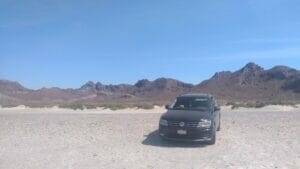
Given Mexico’s vast size, the most efficient and cost-effective means of transportation between tourist destinations is by car. At our company, we primarily use our own SUVs to guide our customers. However, one concern when it comes to car travel is accidents. While it’s impossible to prevent accidents entirely, we strive to minimize the probability of at-fault accidents and collisions by strictly adhering to the following guidelines:
As of April 2023, we have had zero traffic accidents during our tours.
- I personally, Kou Iwasaki, with extensive driving experience in Mexico, will be the driver (please see my driver’s profile below).
- I have personally driven on various roads throughout Mexico and continuously stay informed about road conditions and characteristics.
- I ensure a minimum of 7 hours of sleep before commencing work (excluding the time taken to fall asleep).
- I abstain from consuming alcohol within 10 hours prior to driving. When accompanying customers the night before, I limit alcohol consumption to one unit and cease drinking alcohol at least 10 hours before driving.
- If I feel tired or drowsy while driving, I take a rest at the nearest parking space.
- Our vehicles are equipped with a total of 6 airbags.
- Our vehicles have an alarm system that alerts in case of drowsiness or fatigue-related swaying.
- Our vehicles undergo regular maintenance checks, including the manufacturer-recommended 15,000-kilometer inspection, performed by authorized dealers.
- We exclusively use genuine parts provided by dealerships.
- We adhere to the legal speed limit for commercial vehicles (95 km/h), displayed digitally for better visibility to customers.
- We avoid vehicles exhibiting dangerous driving behavior or signs of poor maintenance, minimizing the probability of collisions.
- We carry an air compressor in our vehicles to ensure proper tire pressure at all times. In case the dealership points out significant tire tread wear during inspections, we replace the tires with new ones.
Driving Experience in Mexico
Name
Ko Iwasaki
Qualifications
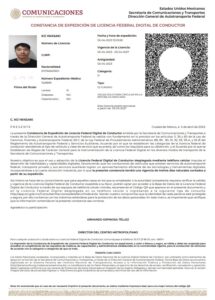
Federal Commercial Driver’s License
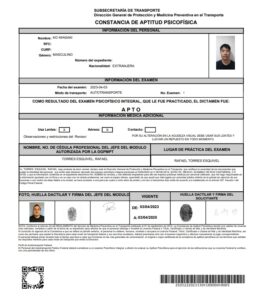
Physical and Mental Fitness Certificate
Driving Experience in Mexico
- 16 years since April 2007
- Total distance driven within Mexico exceeds 400,000 kilometers
Accidents in Mexico (up to today’s date)
- At-fault accidents: Zero
- Collisions: One
Incident: A minor rear-end collision while waiting to make a left turn at a traffic signal, resulting in a 20-centimeter diameter and 2-centimeter depth dent on the lower part of the left taillight.
Areas where I have personally driven and investigated road conditions and safety
Indicating only highways and major arterial roads:
- Mexico City, Morelia, Guadalajara, Mazatlán
- Mexico City, Pachuca, Xalapa, Tuxpan
- Mexico City, Querétaro, Guanajuato, San Miguel de Allende
- Mexico City, Zacatecas, Saltillo, Monterrey
- Mexico City, San Luis Potosí, Real de Catorce, Matehuala
- Mexico City, Acapulco
- Mexico City, Puebla, Veracruz
- Mexico City, Orizaba, Veracruz
- Mexico City, Harapa, Veracruz
- Mexico City, Puebla, Oaxaca
- Mexico City, Puebla, Córdoba, Villahermosa, Palenque
- Oaxaca City, Puerto Escondido, Huatulco
- Oaxaca City, San Cristóbal de las Casas, Palenque
- Oaxaca City, Soconusco, Tapachula
- Palenque, Guatemala border, Tapachula
- Ocosingo, San Juan Chamula, San Cristóbal de las Casas
- Palenque, Calakmul, Chetumal, Tulum, Cancún
- Villahermosa, Ciudad del Carmen, Campeche, Mérida
- Mérida, Las Coloradas, Cancún
- Guadalajara, Colima, Manzanillo, San Juan de los Lagos
- Los Cabos, San Felipe, Ensenada, Tijuana
- Tijuana, Tecate, Guadalupe Valley, Ensenada
Safety
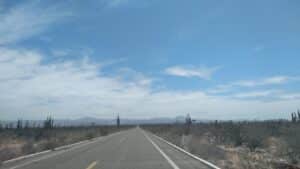
One of the challenges of traveling in Mexico is concerns about safety. While incidents in tourist areas are relatively rare, most crimes occur during transportation. To enhance security, we take the following measures:
As of March 2023, we have had zero incidents of crime during our tours.
- Unless there are special circumstances, we avoid driving on highways late at night and create itineraries that allow for ample time.
- We utilize toll roads whenever possible. We only use routes that I have personally driven and deemed safe.
- We make efforts to stay informed about crime rates in different areas and avoid high-crime locations when planning routes.
- We gather security information from local residents. When necessary to take alternate routes due to traffic congestion, we prioritize safety rather than distance.
- During the preparation stage, we provide customers with guidance on crime prevention, including their clothing and personal belongings.
- We maintain distance from suspicious vehicles or individuals while driving.
Crime Records
Incidents during tours (including attempted incidents) up to today’s date:
- Robbery, pickpocketing, snatch theft: Zero
- Vehicle break-ins: Zero
- Attempted incidents: Zero
Emergency Situations
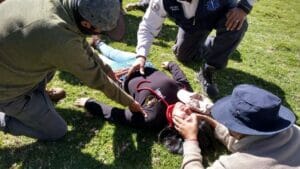
To become a government-certified guide in Mexico, it is mandatory to undergo primary first-aid training and obtain a license. The license is valid for one or two years, and it requires undergoing retraining before expiration. Even if the license has not expired, I actively engage in self-study to ensure the ability to respond appropriately during emergencies.
For nature-based tours such as hiking and mountaineering, the primary first-aid training differs from cultural-based training. We receive training specifically for primary first-aid measures in remote areas with limited communication and under natural conditions. While not legally required, for our hiking and mountaineering tour services, we always have one first-aid-certified personnel accompanying (mandatory). This ensures smooth support during emergencies, including communication with emergency services and assistance during minor injuries or illnesses.
- We continuously update our knowledge and skills regarding primary first-aid measures.
- During tours to remote areas, we are aware of the locations of medical facilities along the route to ensure the shortest possible arrival time.
- We provide customers with information about precautionary measures at each tourist destination.
- For customers without a mobile phone during free time, we provide our mobile phone to maintain communication. In case of needing assistance, we can call upon fellow guides.
- For tourist destinations with no mobile phone signal, such as mountainous areas, we carry a 5W (maximum for mobile use) VHF transceiver to ensure communication with medical personnel.
- For hiking and mountaineering tours with a group size of four or more, we have an additional guide (with primary first-aid license) to provide seamless support during emergencies.